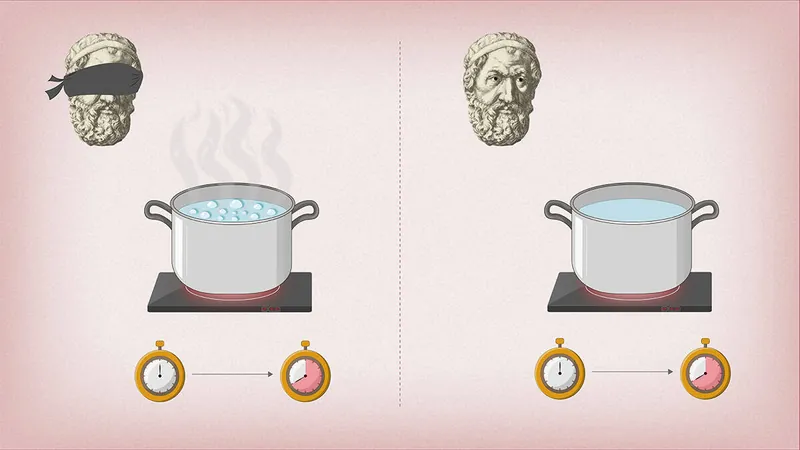
Revolutionary Car Exhaust Technique Could Transform Catalysts!
2025-04-11
Author: Daniel
Unlocking the Secrets of Efficiency in Catalytic Converters
Imagine a breakthrough that not only boosts the performance of catalytic converters but also cuts down on the need for expensive metals. An international team of researchers has discovered that passing hot car exhaust over catalysts generates a game-changing reaction that enhances their efficiency and minimizes reliance on precious materials.
A Surprising Discovery in Catalytic Science
Published in the prestigious journal *Nature*, this study unveils how nitrogen oxides and carbon monoxide in hot exhaust can catalyze a previously unknown process. This transformative reaction increases the catalytic activity significantly, with potential implications for emission control technologies in vehicles and industrial applications.
From Dust to Power: Ceria Clusters Unleashed
At the heart of this innovation are ceria particles, a key ingredient in catalysts. The hot exhaust fosters the formation of tiny, two-dimensional clusters of ceria that amplify reaction sites. The result? An uptick in efficiency, thanks to a surge of mobile oxygen ions that actively engage in essential chemical reactions, boosting processes like hydrocarbon oxidation.
Ten Times the Activity—Thanks to Serendipity!
This astounding method, discovered almost by accident, enhances catalytic efficiency by a staggering tenfold. "Luck played a role in this scientific breakthrough," stated Yong Wang, a lead researcher from Washington State University. "Sometimes, amazing discoveries occur when you least expect them."
Combating Catalyst Degradation: A Science Mystery Solved
As manufacturers grapple with the decline of catalytic converters over time, they often resort to increasing amounts of costly metals like rhodium and platinum to meet regulations. Despite the common belief that extreme heat and harsh conditions would degrade these metals, the study's findings indicate otherwise, revealing an unexpected resilience.
Challenging Assumptions and Redefining Testing Methods
In an innovative approach, researchers decided to artificially age the catalyst—not with water as traditionally done, but with sizzling hot car exhaust. To their astonishment, this led to enhanced performance instead of deterioration. 'Our initial instincts suggested the catalyst would fail, but the results surprised us,' remarked Abhaya Datye from the University of New Mexico.
The Future of Catalytic Technology: Cost-Efficient and Effective
This newfound method paves the way for a future where the requirement for expensive metals like rhodium could be significantly reduced, resulting in substantial cost savings—consider that the rhodium content in a catalytic converter can reach up to $800! The goal is now to use this technique intentionally, activating catalysts right from the start for optimal performance.
Science in Action: Reducing Costs While Improving Performance
János Szanyi, another key researcher, noted that pathways created during this clustering of ceria nanoparticles in spent catalysts offer exceptional resilience, enabling them to withstand the rigorous demands of vehicle exhaust without losing efficacy. This breakthrough revolutionizes our understanding of catalyst longevity and functionality.
Conclusion: A New Era in Emission Control Technology
The implications of this research are enormous, hinting at a more sustainable and cost-effective future for catalytic converters. As researchers continue to explore this approach, we may soon witness a monumental shift in how we manage emissions in the automotive and industrial sectors.




 Brasil (PT)
Brasil (PT)
 Canada (EN)
Canada (EN)
 Chile (ES)
Chile (ES)
 Česko (CS)
Česko (CS)
 대한민국 (KO)
대한민국 (KO)
 España (ES)
España (ES)
 France (FR)
France (FR)
 Hong Kong (EN)
Hong Kong (EN)
 Italia (IT)
Italia (IT)
 日本 (JA)
日本 (JA)
 Magyarország (HU)
Magyarország (HU)
 Norge (NO)
Norge (NO)
 Polska (PL)
Polska (PL)
 Schweiz (DE)
Schweiz (DE)
 Singapore (EN)
Singapore (EN)
 Sverige (SV)
Sverige (SV)
 Suomi (FI)
Suomi (FI)
 Türkiye (TR)
Türkiye (TR)
 الإمارات العربية المتحدة (AR)
الإمارات العربية المتحدة (AR)